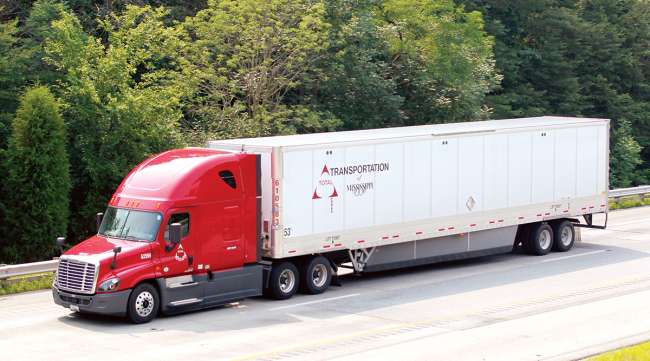Staff Reporter
Mississippi Fleet Preps Young Drivers for Road Ahead

A Mississippi fleet CEO has addressed the driver shortage by training candidates between the ages of 18 and 20.
John Stomps, CEO and founder of Total Transportation of Mississippi, said the need for drivers caused him to look into a new strategy in January 2018.
It was then that Stomps tasked his staff with devising a training program for 18- to 20-year-old drivers, who can only transport cargo within state lines. Federal law prohibits drivers younger than 21 from piloting Class 8 trucks over state lines. Thus, some fleets have young drivers handling intrastate, not interstate, routes.

Stomps
Stomps said with possible changes in federal law looming, he decided to look into training young drivers.
“I guess it’s just my personality. We have a driver shortage,” Stomps told Transport Topics. “That’s the big problem.”
He presides over a fleet of 854 trucks that service the lower 48 states and Canada. His plan is not to expect young drivers to be ready to do a haul from Jackson, Miss., to Newark, N.J., anytime soon, even with federal approval. Instead, Stomps provides 640 hours of training on everything from safety to service to personal money management. Stomps then pays an outside education provider to help the drivers get their commercial driver licenses.
Because of the driver shortage, the Federal Motor Carrier Safety Administration announced in May that it is seeking public comment on a potential pilot program that would allow drivers between the ages of 18 and 20 to operate trucks interstate.
FMCSA’s initiative builds on the federal Commercial Driver Pilot Program, which was announced last July and allows certain 18- to 20-year-olds with military training to operate trucks interstate.
Members of the trucking community have supported efforts to recruit younger people into the industry. The Truckload Carriers Association in 2000 petitioned FMCSA to conduct a pilot program geared toward younger drivers. A common argument is that many young people graduate from high school and abandon trucking aspirations to pursue another trade because of the interstate-trucking age rules.

Batts
Lana Batts, the former president of the Truckload Carriers Association, told TT she often sees the oddity of the federal law carried out daily. For example, Batts, who lives in Montana, knows of drivers between the ages of 18 and 20 driving Class 8 trucks across Montana, the fourth-biggest state, in trips that can easily total 600 miles. These young drivers can use the interstate highway, she says, but they cannot cross state lines into South Dakota, North Dakota, Wyoming or Idaho.
“[It] is a little bit crazy,” Batts said.
Big challenges for the industry will remain, even if federal law changes. She said many insurance companies may balk at insuring drivers younger than 21, and that would mean self-insuring those drivers.
Big fleets also may want to avoid the potential headlines of a major accident caused by a young driver, Batts said.
Stomps said the initial class for his Richland, Miss.-based fleet was composed of five men, ages 18 and 19. He chose to focus on five after extensive interviews which centered on maturity and basic skills around heavy machinery.
Today, Stomps is looking at two 20-year-old candidates, and one is a military veteran who served in Iraq.
Making younger drivers especially attractive is the possibility they will stay with the company. While turnover of older drivers presents opportunities to competing firms, Stomps says recruitment has its downsides.
“A good driver is not going to leave a good company,” he said.
Another reason for the need for younger drivers, Stomps said, is effective drug testing in trucking. The tests frequently take driver candidates out of contention. Stomps said he lost more than a few recruits after hair testing for illicit drugs.
But the potential upside is attractive, even if the training is costly, Stomps told TT. One just has to be in it for the long haul.
“This is not a short-term fix,” he said.




